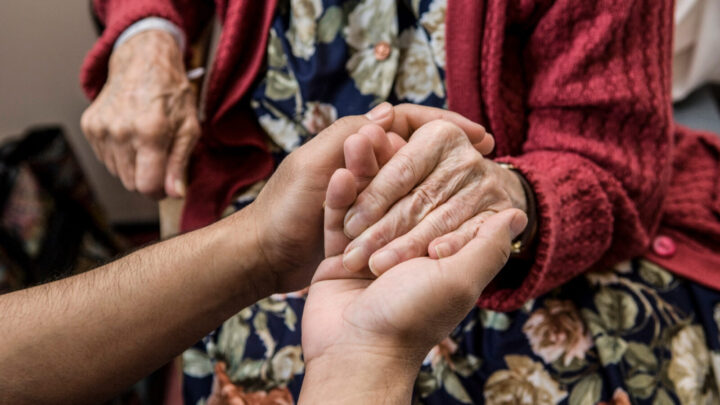This week’s health news includes an easy way to cut cardiovascular risk by 20%, an update on the effectiveness of breast cancer screening and some advice for people suffering from long COVID symptoms.
Finding breast cancer early
Deaths from breast cancer have dropped 43% from 1989 because of earlier detection and better treatment regimens, according to the American Cancer Society, which will celebrate its annual Breast Cancer Awareness Month in October.
The group says that women who don’t have factors that elevate risk should start having annual mammograms at age 45, though screening can start as early as 40. In a news release, the society said that “getting regular mammograms, which are low-dose X-ray images of breasts, is the most reliable way to detect breast cancer early.”
Breast cancer is the most common cancer in women, with the exception of skin cancer. It’s also No. 2 for cancer deaths, said Dr. Robert Smith, the society’s senior vice president of early cancer detection science. With regular mammograms, he said the risk of dying from breast cancer is substantially reduced.
American Cancer Society breast cancer guidelines say women ages 40-44 should be allowed annual screening if they want it, but they should definitely start at age 45 and continue until 55. After that, they can be screened every two years or annually, depending on what they want.
The society said it’s important to talk to your doctor about screening so that factors like family history, genetics and lifestyle choices that may affect risk can be considered. Experts also say women should report any changes in how their breasts look and feel to a health care provider immediately.
Related
After age 74, “screening should continue as long as they are in good health and expected to live at least 10 more years,” per the guidelines.
“Women who receive regular mammograms and are diagnosed with breast cancer are more likely to be diagnosed earlier, less likely to need aggressive treatments and more likely to be cured,” said Smith in the release. “Once a woman begins breast cancer screening, it is important that she commits to regular, on-time, examinations. Regular screening, rather than irregular or occasional screening, offers the greatest benefit.”
Exercise and post COVID-19
Folks dealing with long COVID symptoms were able to tolerate exercise better, had less shortness of breath and generally felt better if they participated in respiratory training and exercise-based rehabilitation, according to a study published in JAMA Network Open.
But the researchers, who looked at 14 randomized clinical trials involving 1,244 participants total, said the clinicians should carefully monitor participating patients “for exercise-induced adverse events such as orthostatic intolerance and postexertional symptom exacerbation,” as JAMA Network Medical News in Brief put it.
That article noted that more than a quarter of U.S. adults who had COVID-19 said that, as of August 2023, they have had long COVID symptoms, based on surveys by the Centers for Disease Control and Prevention. Those symptoms, the health organization said, include exhaustion, headaches and shortness of breath, among others.
The review of studies found that such programs offer a “high probability of improvement compared with the current standard of care.”
Climbing stairs and heart disease risk
Climbing at least five flights of stairs a day — about 50 steps — could make a huge difference in a person’s risk of heart disease, according to a new study from Tulane University published in the journal Atherosclerosis.
That climbing habit could reduce cardiovascular disease risk 20%, Tulane said in a news release.
Atherosclerotic cardiovascular disease and coronary artery disease and stroke are the leading causes of morbidity and death worldwide.
“Short bursts of high-intensity stair climbing are a time-efficient way to improve cardiorespiratory fitness and lipid profile, especially among those unable to achieve the current physical activity recommendations,” said co-corresponding author Dr. Lu Qi, professor at the Tulane University School of Public Health and Tropical Medicine. “These findings highlight the potential advantages of stair climbing as a primary preventive measure” of atherosclerotic cardiovascular disease among the general public.
The study used UK Biobank data from 450,000 adults. The researchers calculated participants’ risk of heart disease based on family history, known risk factors and genetic risk factors, then asked about lifestyle habits and how often they climbed stairs. The median follow-up time was 12.5 years.
“The study found that climbing more stairs daily especially reduced risk of cardiovascular disease in those who were less susceptible,” a news release said. “However, Qi said the increased risk of heart disease in more susceptible people could be ‘effectively offset’ by daily stair climbing.”
Stairs are also a readily available tool.




